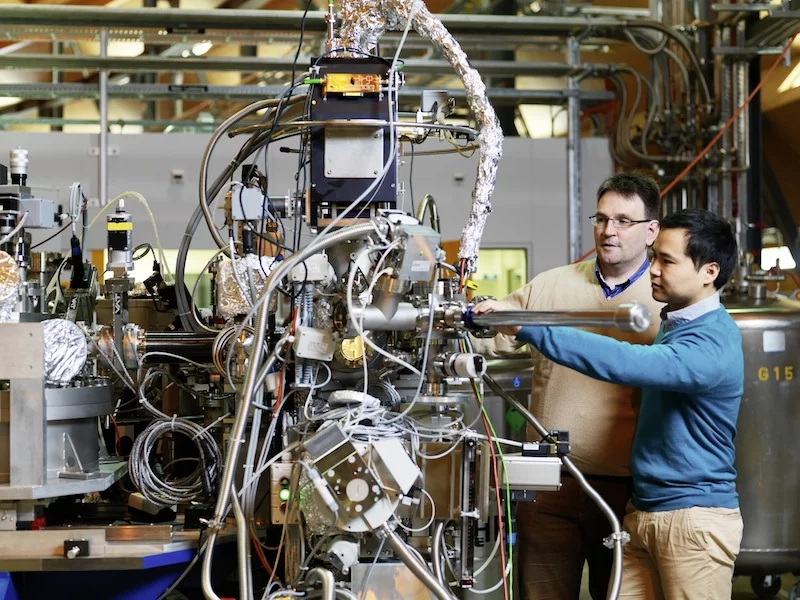An electron has been observed to decay into two separate parts, each carrying a particular property of the electron: a spinon carrying its spin – the property making the electron behave as a tiny compass needle – and an orbiton carrying its orbital moment – which arises from the electron’s motion around the nucleus. These newly created particles, however, cannot leave the material in which they have been produced. This result is reported in a paper published in Nature by an international team of researchers led by experimental physicists from the Paul Scherrer Institute (Switzerland) and theoretical physicists from the IFW Dresden (Germany).
Read the full story
Read the full story
Facility: SLS
J. Schlappa, K. Wohlfeld, K. J. Zhou, M. Mourigal, M. W. Haverkort, V. N. Strocov, L. Hozoi, C. Monney, S. Nishimoto, S. Singh, A. Revcolevschi, J.-S. Caux, L. Patthey, H. M. Rønnow, J. van den Brink, and T. Schmitt;
Nature Advance Online Publication, 18.04.2012, DOI: 10.1038/nature10974
Laboratory for Condensed Matter, Research Division Synchrotron Radiation and Nanotechnology,
Paul Scherrer Institute, 5232 Villigen PSI, Switzerland;
Tel: +41 56 310 37 62, E-Mail: thorsten.schmitt@psi.ch
http://www.psi.ch/sls/adress/
Prof. Dr. Jeroen van den Brink (theory)
Institute for Theoretical Solid State Physics,
IFW Dresden, Helmholtzstrasse 20, 01069 Dresden, Germany;
Tel: +49/(0)351/4659-400, E-Mail: j.van.den.brink@ifw-dresden.de
http://www.ifw-dresden.de/institutes/itf/members/jvdb1
Reference
Spin-Orbital Separation in the quasi 1D Mott-insulator Sr2CuO3J. Schlappa, K. Wohlfeld, K. J. Zhou, M. Mourigal, M. W. Haverkort, V. N. Strocov, L. Hozoi, C. Monney, S. Nishimoto, S. Singh, A. Revcolevschi, J.-S. Caux, L. Patthey, H. M. Rønnow, J. van den Brink, and T. Schmitt;
Nature Advance Online Publication, 18.04.2012, DOI: 10.1038/nature10974
Contact
Dr. Thorsten Schmitt (experimentation)Laboratory for Condensed Matter, Research Division Synchrotron Radiation and Nanotechnology,
Paul Scherrer Institute, 5232 Villigen PSI, Switzerland;
Tel: +41 56 310 37 62, E-Mail: thorsten.schmitt@psi.ch
http://www.psi.ch/sls/adress/
Prof. Dr. Jeroen van den Brink (theory)
Institute for Theoretical Solid State Physics,
IFW Dresden, Helmholtzstrasse 20, 01069 Dresden, Germany;
Tel: +49/(0)351/4659-400, E-Mail: j.van.den.brink@ifw-dresden.de
http://www.ifw-dresden.de/institutes/itf/members/jvdb1
